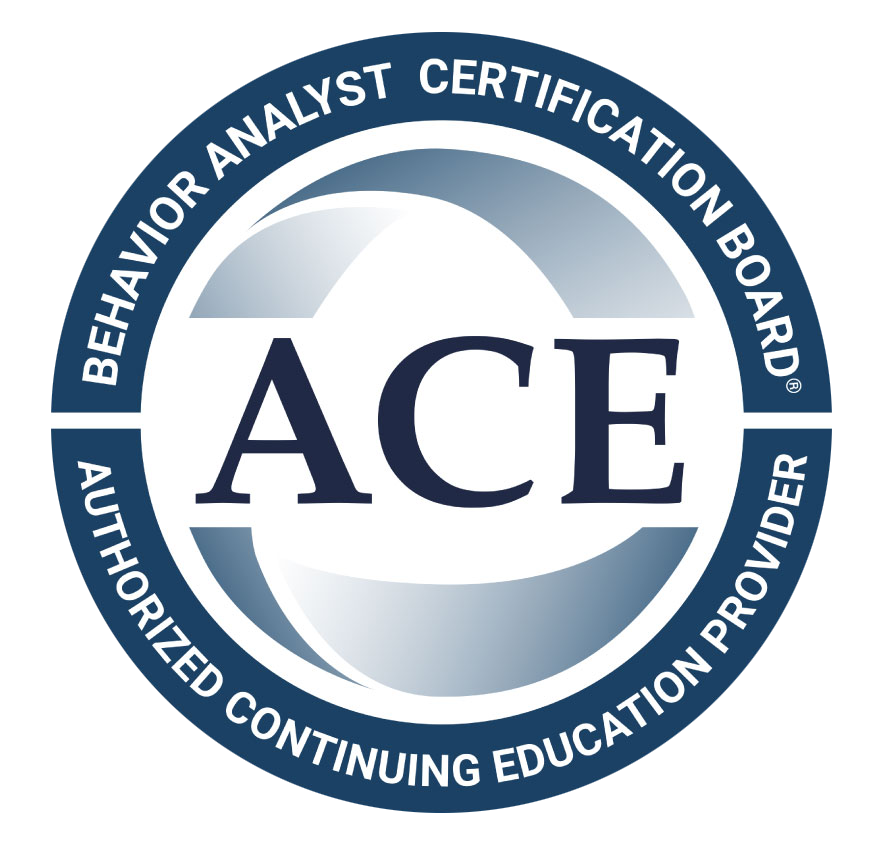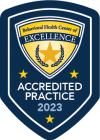School-Based ABA Therapy Overview
Benefits of ABA in Schools
Applied Behavior Analysis (ABA) therapy offers numerous benefits when implemented in school settings. By creating a structured and supportive learning environment, ABA therapy promotes independence, enhances student engagement, and facilitates positive outcomes for students on the autism spectrum. Students benefit from
individualized approaches that focus on their unique needs and developmental goals. Utilizing ABA techniques in schools can lead to a supportive and inclusive learning environment, resulting in significant improvements in behavior, social skills, and academic performance.
| Benefit | Description |
|---|---|
| Enhanced Engagement | Students become more actively involved in learning. |
| Positive Behavioral Outcomes | Reduction in disruptive behaviors and improved social interactions. |
| Independence | Encourages self-reliance and autonomy in daily activities. |
| Inclusive Environment | Promotes a more inclusive classroom setting, benefiting all students. |
ABA Training Programs
Effective training programs for educators in ABA provide the necessary tools and knowledge to apply ABA principles effectively. These training programs are crucial for improving learning, behavior, and social skills in students with autism spectrum disorder (ASD). Training programs typically include comprehensive modules on behavior assessment, intervention strategies, and data collection techniques. By equipping teachers with ABA strategies, schools can ensure a consistent and effective approach to managing and supporting students with ASD.
| Training Component | Description |
|---|---|
| Behavior Assessment | Techniques for identifying and assessing behavioral issues. |
| Intervention Strategies | Methods for implementing ABA interventions in classroom settings. |
| Data Collection | Best practices for tracking and analyzing student progress. |
| Continuous Education | Ongoing professional development to stay current with ABA techniques. |
For more information on implementing ABA in schools, visit our school-based ABA therapy programs page. Additionally, explore our resources on school-based behavior intervention to learn about tailored approaches for different school environments.
Implementing ABA in School Settings
The implementation of Applied Behavior Analysis (ABA) in school settings involves several key strategies to support students with autism in achieving academic, behavioral, and social success. These strategies include creating individualized behavior plans, integrating evidence-based practices into the curriculum, and utilizing data-driven interventions.
Individualized Behavior Plans
Individualized behavior plans are essential in school-based ABA therapy programs. These plans are tailored to meet the unique needs of each student, ensuring that they receive the specific support and interventions required for their success. Key components of an individualized behavior plan include:
- Identifying specific behavioral goals
- Developing strategies to address challenging behaviors
- Implementing positive reinforcement to encourage desired behaviors
- Monitoring and adjusting the plan based on ongoing assessment and data
Individualized behavior plans are designed to help students achieve their full potential by providing structured support and systematic teaching techniques.
Evidence-Based Strategies in Curriculum
Integrating evidence-based ABA strategies into the school curriculum is crucial for promoting effective learning and social skills development in students with autism. Effective training programs for teachers in ABA provide them with the tools and knowledge to apply these principles effectively.
Some key evidence-based strategies include:
- Task Analysis:
Breaking down complex tasks into smaller, manageable steps to teach specific skills incrementally.
- Prompting:
Using verbal, gestural, or physical cues to guide the student toward the desired behavior.
- Modeling:
Demonstrating the desired behavior to help the student learn through observation.
- Shaping: Gradually reinforcing closer approximations of the desired behavior until the final behavior is achieved.
Data-Driven Interventions
Data-driven interventions are a fundamental aspect of school-based behavior intervention. By collecting and analyzing data on student progress, educators and ABA therapists can make informed decisions about the effectiveness of interventions and make necessary adjustments. Discrete trial teaching (DTT) is a structured technique involving teaching one skill at a time in a systematic manner.
| Intervention Technique | Description | Purpose |
|---|---|---|
| Discrete Trial Teaching (DTT) | Structured teaching method focusing on discrete learning opportunities | Reinforces correct responses |
| Functional Behavior Assessment (FBA) | Systematic method of identifying the causes of challenging behaviors | Guides the development of behavior intervention plans |
| Natural Environment Teaching (NET) | Teaching skills in the student's natural environment | Enhances generalization of skills |
The use of data-driven interventions aligns with the requirements of the Individuals with Disabilities Education Act (IDEA), promoting independence and enhancing student engagement in a structured learning environment.
Implementing an effective school-based ABA therapy program involves a collaborative approach that includes individualized behavior plans, evidence-based strategies, and data-driven interventions to support the unique needs of each student. For more information about ABA therapy in educational settings, visit our article on ABA therapy in schools.
Techniques and Strategies in School-Based ABA
Functional Behavior Assessment (FBA)
A cornerstone of school-based ABA therapy is the Functional Behavior Assessment (FBA). Conducted by a Board Certified Behavior Analyst (BCBA), an FBA aims to identify both student strengths and areas that need improvement. This comprehensive assessment gathers vital data to create a personalized Behavior Intervention Plan (BIP). The BIP outlines strategies tailored to the student's unique needs, ensuring targeted and effective intervention.
Discrete Trial Training (DTT)
Discrete Trial Training (DTT) is a highly-structured method designed to teach specific skills through a clear sequence of instruction, learner response, and immediate consequence. This approach involves breaking down skills into smaller, teachable units to provide repeated opportunities for learning, thus making it easier for students to grasp new concepts. Immediate reinforcement helps students understand the expected response.
DTT is used extensively in school aba therapy services to teach a wide range of skills, from academic tasks to social behaviors. The structure of DTT makes it suitable for various settings and populations, providing a flexible yet effective teaching strategy.
Natural Environment Teaching (NET)
Natural Environment Teaching (NET) focuses on utilizing the natural environment as the learning context. Unlike the more structured DTT, NET emphasizes real-life situations to facilitate learning. This technique involves teaching skills during typical daily activities and routines, making the learning process more relevant and engaging for students.
In a school setting, NET can be particularly effective for integrating academic and social skills into a student's routine. Building trust and rapport with students through activities that foster connection is essential. Using praise and rewards, teachers and therapists can establish positive interaction dynamics, enhancing the overall effectiveness of the therapy.
Implementing these techniques within a school setting provides a comprehensive approach to support students with autism and related conditions. Each strategy—from FBA to DTT and NET—plays a critical role in creating a supportive and effective learning environment.
Collaboration for Successful ABA Therapy
Collaboration among teachers, therapists, and parents is essential in school-based ABA therapy to ensure consistency and effectiveness. Each group plays a key role in reinforcing skills and behaviors across various settings.
Involving Teachers, Therapists, and Parents
Successful ABA therapy in schools requires the active involvement of teachers, ABA therapists, and parents. Collaboration among these parties helps in creating a comprehensive support system for the student.
- Teachers: They integrate ABA strategies into the classroom environment, provide daily observation of behaviors, and communicate these observations to therapists and parents.
- ABA Therapists: These professionals conduct functional behavior assessments (FBA), develop individual behavior plans, and provide direct instruction and intervention in 1:1 or small group settings.
- Parents: Active parental involvement ensures the generalization of ABA strategies from school to home. By receiving training, parents can reinforce the skills and behaviors their children learn at school.
This collaborative approach builds trust and rapport with students through activities that foster connections, using praise and rewards to establish positive interaction dynamics.
Consistency Across Settings
Consistency across different settings is critical for the success of ABA therapy. Skills and behaviors taught in school need reinforcement at home and in other environments to ensure they become ingrained.
- Home: Parents continue the ABA interventions at home by following individual behavior plans and using the same strategies taught in school.
- Classroom: Teachers maintain consistency by implementing the same ABA techniques and using data-driven approaches to monitor and manage student behaviors.
- Community: Skills are generalized to real-world settings, helping students apply what they've learned in various social and community contexts.
| Setting | Role | Key Activities |
|---|---|---|
| Home | Parents | Reinforce school-taught behaviors, use same ABA strategies. |
| Classroom | Teachers | Integrate ABA into class, daily observation, data logging. |
| Community | ABA Therapists, Parents | Generalize skills to public settings, support real-world application. |
Tailoring Interventions
Tailoring interventions to meet the unique needs of each student enhances the efficacy of ABA therapy. Personalized plans consider the student's strengths, challenges, and preferred learning styles.
- Individualized Behavior Plans: These plans are developed based on assessments conducted by ABA therapists. They include specific, measurable goals tailored to the student's needs.
- Evidence-Based Strategies: Techniques like Discrete Trial Training (DTT), Natural Environment Teaching (NET), and Functional Behavior Assessment (FBA) are customized to each student.
- Regular Monitoring and Adjustments: Continuous data collection and progress monitoring help in making necessary adjustments to the interventions. This ensures that the strategies remain effective over time.
Collaboration and consistency are crucial elements in school-based ABA therapy techniques. They ensure that the interventions are tailored to specific needs and that skills are reinforced across settings.
Fostering Social Skills in ABA Therapy
Fostering social skills is essential in school-based ABA therapy. Through targeted interventions and collaborative efforts, students can develop meaningful peer relationships, understand social norms, and engage in positive interactions. This section focuses on effective techniques for improving social skills among students receiving ABA therapy in schools.
Peer Interactions
Peer interactions are a cornerstone of social skill development in ABA therapy. Facilitating these interactions helps students with autism and related conditions to communicate more effectively and build confidence.
In school settings, ABA therapists work with students to:
- Encourage participation in group activities.
- Teach turn-taking and sharing.
- Model appropriate responses in social situations.
Studies have shown that
structured peer interaction exercises can lead to significant improvements in communicative abilities and adaptive behaviors.
| Activity | Objective | Expected Outcome |
|---|---|---|
| Group Games | Encourage cooperation and teamwork | Improved social skills |
| Role-Playing | Practice social scenarios | Enhanced communication |
Social Cues and Norms
Understanding social cues and norms is another critical aspect of ABA therapy. Children with autism often struggle to interpret these cues, leading to difficulties in social interactions.
Key techniques include:
- Using visual aids to illustrate social norms.
- Practicing facial expressions and body language.
- Implementing role-play scenarios to demonstrate appropriate responses.
These approaches help students to:
- Recognize and respond to emotions in others.
- Understand the concept of personal space.
- Follow social rules and conventions.
Building these skills can significantly reduce misunderstandings and help students navigate social environments more comfortably.
Positive Interaction Dynamics
Positive interaction dynamics bridge the gap between learned skills and real-world application. By cultivating a supportive environment, students are encouraged to engage in beneficial interactions.
Strategies to foster positive dynamics include:
- Building trust and rapport through consistent praise and rewards.
- Collaborating with teachers, parents, and guidance counselors to ensure consistency across settings.
- Addressing problem behaviors like tantrums by identifying triggers and teaching coping mechanisms.
| Dynamic | Technique | Benefit |
|---|---|---|
| Trust Building | Consistent praise and rewards | Enhanced engagement |
| Collaborative Approach | Involving all stakeholders | Unified support system |
By integrating these approaches, ABA therapy can significantly improve social skills and interaction quality.
Engaging students through peer interactions, teaching social cues and norms, and fostering positive interaction dynamics are critical in school-based ABA therapy. These strategies equip students with the tools they need to thrive socially, both in and out of school.
Maximizing Learning with ABA
School-based ABA therapy provides a structured and supportive learning environment that is crucial for students with Autism Spectrum Disorder (ASD) and related conditions. This section explores key strategies for maximizing academic performance, generalizing skills, and employing specific ABA techniques.
Academic Performance Boost
Implementing ABA therapy in school settings can vastly improve educational outcomes for students with ASD. By creating a structured learning environment, ABA promotes independence and enhances student engagement.
Data shows significant improvements in engagement, task completion, and a reduction in behavioral incidents, highlighting the positive impact of school-based ABA therapy.
Generalization of Skills
School-based ABA therapy aims to foster skill generalization. Students learn to apply skills acquired in structured settings to real-life situations. This aspect is crucial for the practical application of learned behaviors and academic skills.
Key components for skill generalization:
- Consistency Across Settings: Reinforcement of skills in both school and home environments is essential. Collaboration among parents, teachers, and ABA therapists ensures consistent application.
- Multiple Exemplars: Utilizing varied examples during teaching helps students apply skills in different contexts.
- Natural Environment Teaching (NET): Involves teaching in natural settings to facilitate organic learning experiences.
DTT, Visual Supports, Positive Reinforcement
Several specific ABA techniques are particularly effective in a school setting:
- Discrete Trial Training (DTT): Involves breaking down skills into smaller, teachable components. It's highly structured, allowing for repetitive practice and reinforcement. DTT helps in the systematic teaching of academic and functional skills.
- Visual Supports: Tools like visual schedules, social stories, and visual prompts are employed to aid comprehension. Visual supports promote consistency and help organize daily routines, making them predictable for the student.
- Positive Reinforcement: This strategy involves rewarding desired behaviors to encourage repetition. It's a cornerstone of ABA therapy and is proven to increase desirable behaviors effectively. Examples include verbal praise, token economies, and access to preferred activities.
By integrating these strategies, school-based ABA therapy can optimize academic performance, support the generalization of skills, and leverage proven techniques to facilitate meaningful learning for students with ASD and related conditions.
SOURCES:
https://pmc.ncbi.nlm.nih.gov/articles/PMC11487924/
https://web.teachtown.com/blog/aba-strategies-for-autism/
https://files.eric.ed.gov/fulltext/EJ976654.pdf
https://insightstobehavior.com/blog/9-proactive-aba-methods-to-redirect-student-behavior/
https://online.regiscollege.edu/blog/aba-therapy-examples/
https://pmc.ncbi.nlm.nih.gov/articles/PMC5632603/
https://www.mdpi.com/2227-9067/11/9/1062









